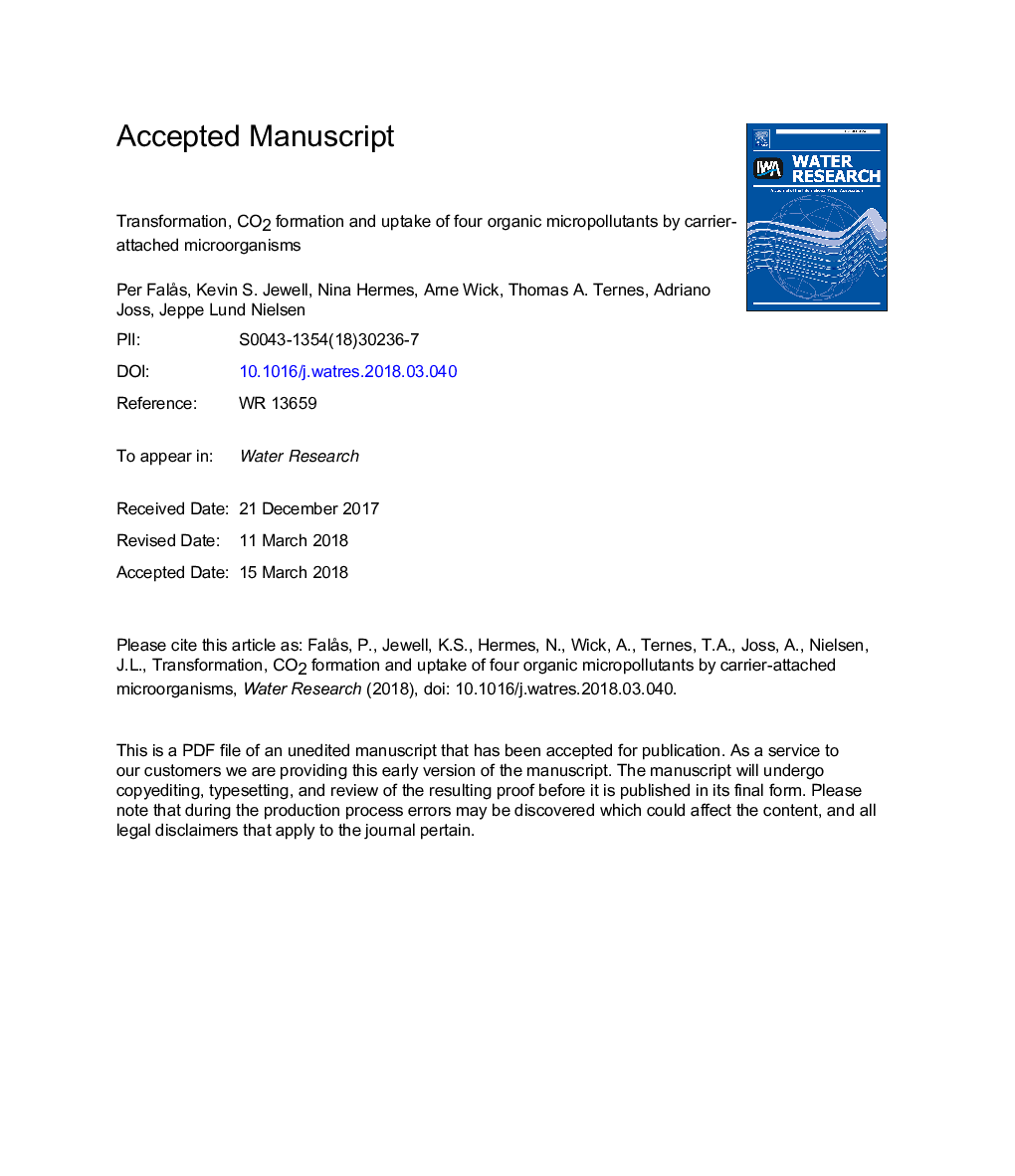| Article ID | Journal | Published Year | Pages | File Type |
|---|---|---|---|---|
| 8873800 | Water Research | 2018 | 42 Pages |
Abstract
A tiered process was developed to assess the transformation, CO2 formation and uptake of four organic micropollutants by carrier-attached microorganisms from two municipal wastewater treatment plants. At the first tier, primary transformation of ibuprofen, naproxen, diclofenac, and mecoprop by carrier-attached microorganisms was shown by the dissipation of the target compounds and the formation of five transformation products using LC-tandem MS. At the second tier, the microbial cleavage of the four organic micropollutants was confirmed with 14C-labeled micropollutants through liquid scintillation counting of the 14CO2 formed. At the third tier, microautoradiography coupled with ï¬uorescence in situ hybridization (MAR-FISH) was used to screen carrier-attached microorganisms for uptake of the four radiolabeled micropollutants. Results from the MAR-FISH screening indicated that only a small fraction of the microbial community (â¤1â°) was involved in the uptake of the radiolabeled micropollutants and that the responsible microorganisms differed between the compounds. At the fourth tier, the microbial community structure of the carrier-attached biofilms was analyzed by 16S rRNA gene amplicon sequencing. The sequencing results showed that the MAR-FISH screening targeted â¼80% of the microbial community and that several taxonomic families within the FISH-probed populations with MAR-positive signals (i.e. Firmicutes, Gammaproteobacteria, and Deltaproteobacteria) were present in both biofilms. From the broader perspective of organic micropollutant removal in biological wastewater treatment, the MAR-FISH results of this study indicate a high degree of microbial substrate specialization that could explain differences in transformation rates and patterns between micropollutants and microbial communities.
Related Topics
Physical Sciences and Engineering
Earth and Planetary Sciences
Earth-Surface Processes
Authors
Per Falås, Kevin S. Jewell, Nina Hermes, Arne Wick, Thomas A. Ternes, Adriano Joss, Jeppe Lund Nielsen,
